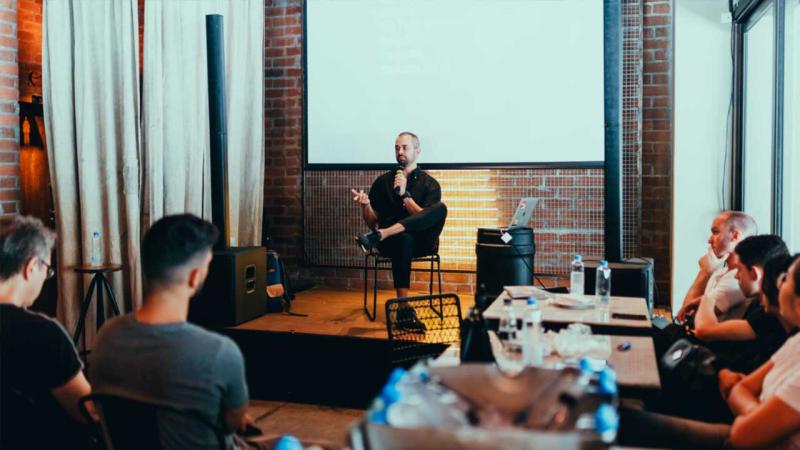In English grammar, understanding tenses is key to expressing actions across different timelines. One of the most straightforward but essential tenses is the simple future tense. It allows speakers and writers to convey actions, events, or conditions that are intended to happen or expected to occur in the future. Whether you’re writing formal emails, creative narratives, or academic essays, mastering this tense will sharpen your communication skills and help you sound more precise and polished.
In this guide, we’ll break down the rules, structures, and variations of the simple future tense, providing plenty of examples, usage tips, and insights. We’ll also explore when it’s most effective to use this tense and how it compares with other future-related structures, such as the future continuous and future perfect tenses.
What is the Simple Future Tense?
The simple future tense describes actions or events that have not yet occurred but will happen at some point. This tense is often used to express intentions, promises, predictions, or spontaneous decisions. Unlike some other verb tenses in English, the simple future does not require a complicated conjugation or irregular forms.
Basic Structure of the Simple Future Tense
There are two common ways to form the simple future tense in English:
- Using “will” + base verb
- Using “be going to” + base verb
Let’s explore each in greater detail.
Formation with “Will”
The auxiliary verb “will” is paired with the base form of a verb to indicate actions that will occur in the future. “Will” expresses decisions, predictions, promises, and offers.
Examples of “Will” in Simple Future Sentences:
- I will call you tomorrow.
- She will complete the project by next week.
- It will rain later this evening.
- We will help you with the report.
In each case, “will” acts as a signal that the action is set to occur sometime after the moment of speaking. This construction makes it easy to refer to events without needing any complex conjugations.
Using “Be Going To” for Future Events
While “will” is common, “be going to” is another popular way to express the future. This form emphasizes pre-planned actions or events that are likely to happen based on present evidence.
Examples of “Be Going To” Sentences:
- I am going to meet Sarah this afternoon.
- They are going to travel to Paris next summer.
- Look at those clouds! It is going to storm soon.
- We are going to celebrate her birthday tomorrow.
Notice how the “be going to” structure often implies intention or a high probability. For example, “It is going to storm soon” suggests that evidence (like dark clouds) indicates the storm is likely to happen.
When to Use “Will” vs. “Be Going To”
Though both “will” and “be going to” refer to future events, they are used differently in specific contexts:
- Spontaneous Decisions: Use “will” for on-the-spot decisions.
- Example: I forgot to bring my wallet! I will go back to get it.
- Plans and Intentions: Use “be going to” for actions already decided or intended.
- Example: We are going to visit our grandparents this weekend.
- Predictions without Evidence: Use “will” for general predictions.
- Example: It will be a great day tomorrow.
- Predictions with Evidence: Use “be going to” when current circumstances suggest a future outcome.
- Example: Look at the sky! It is going to rain soon.
Negative Forms of the Simple Future Tense
Creating negative sentences in the simple future tense is straightforward. For sentences with “will”, add “not” after “will.” For “be going to,” the negative form is constructed by placing “not” between the verb “be” and “going to.”
Examples of Negative Future Sentences:
- I will not attend the meeting tomorrow.
- She is not going to join us for dinner.
- We will not finish the project on time.
- They are not going to win the game.
In spoken English, contractions like “won’t” (for “will not”) are common.
- Example: He won’t go to the party.
Forming Questions in the Simple Future Tense
To ask questions in the simple future tense, switch the subject and the auxiliary verb. For “will” questions, place “will” at the beginning of the sentence. For “be going to” questions, start with the appropriate form of the verb “be.”
Examples of Future Tense Questions:
- Will you call me later?
- Are they going to attend the conference?
- Will it snow tomorrow?
- Is she going to cook dinner tonight?
These types of questions allow for clear inquiries about future actions, events, or plans.
Common Uses of the Simple Future Tense
The simple future tense is incredibly versatile. Here are a few situations where it’s especially useful:
1. Making Predictions
Predictions involve guessing or foreseeing events that will happen in the future. These are often framed with “will” or “be going to.”
- Example: The economy will improve next year.
2. Expressing Intentions and Plans
“Be going to” is typically used to express intentions or plans that have already been made.
- Example: We are going to move to a new house next month.
3. Offering or Promising Assistance
Use “will” when making promises or offers.
- Example: I will help you with your homework.
4. Expressing Spontaneous Decisions
When a decision is made at the moment of speaking, “will” is the appropriate choice.
- Example: I will take the next flight.
Simple Future Tense vs. Other Future Tenses
English offers several ways to talk about the future, and it’s essential to know when the simple future tense is the best option. Let’s briefly compare it with other future-related tenses:
- Future Continuous: Describes actions that will be ongoing at a specific time in the future.
Example: I will be working at 5 PM tomorrow. - Future Perfect: Refers to actions that will have been completed by a certain time in the future.
Example: She will have finished the report by Friday. - Future Perfect Continuous: Focuses on the duration of an action that will be in progress up to a future point.
Example: By next year, they will have been living here for ten years.
Tips for Using the Simple Future Tense Effectively
- Match the Tense to the Context: Use “will” for spontaneous actions or promises, and “be going to” for plans.
- Keep it Simple: Avoid overusing future tenses in formal writing. Sometimes present tenses can effectively describe future events.
- Practice with Scenarios: Create sentences based on common future events to get comfortable using the tense.
Conclusion
The simple future tense is an essential tool for communicating events, intentions, and predictions about the future. Whether you’re making plans, promises, or spontaneous offers, mastering this tense will enhance your writing and speaking skills. Remember the difference between “will” and “be going to,” practice forming questions and negatives, and soon you’ll be using the simple future with ease and confidence.
By practicing regularly and incorporating these structures into your everyday language, you’ll gain fluency in expressing future actions effortlessly.




